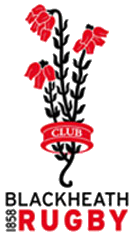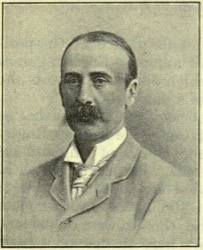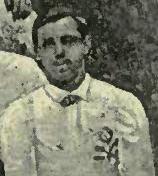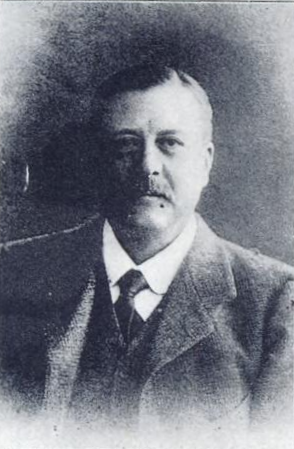The Royal Engineers Association Football Club is an association football team representing the Corps of Royal Engineers, the 'Sappers', of the British Army and based in Chatham, Kent. In the 1870s, it was one of the strongest sides in English football, winning the FA Cup in 1875 and being Cup finalists in three of the first four seasons. The Engineers were pioneers of the combination game, where teammates passed the ball to each other rather than kicking ahead and charging after the ball. With the rise of professional teams, in 1888 the Engineers joined a newly formed Army Football Association.

Blackheath Football Club is a rugby union club based in Well Hall, Eltham, in south-east London.
Lieutenant-Colonel Pelham George von Donop was a British Army officer in the Royal Engineers and later Chief Inspecting Officer of Railways. He represented the Royal Engineers at association football, appearing in two FA Cup Finals, and also made two appearances for the England national football team.
Colonel Herbert Edward Rawson was an English British Army officer and footballer who played once for England, and appeared in two FA Cup finals, winning the cup in 1875 as a member of Royal Engineers A.F.C.

Frederick Stokes was the first captain of the England national rugby union team, who played for and captained the team in the first three rugby internationals, all between England and Scotland. He was also the youngest president of the Rugby Football Union.
The Gipsies Football Club was a short lived 19th century rugby football club that was notable for being one of the twenty-one founding members of the Rugby Football Union, as well as producing a number of international players in the sport's early international fixtures.
The Marlborough Nomads was a 19th-century English rugby union club that was notable for being one of the twenty-one founding members of the Rugby Football Union. They also supplied a number of players for the sport's early international fixtures.
The West Kent Football Club was a 19th-century association football and rugby football club that was notable for being one of the twenty-one founding members of the Rugby Football Union, as well as producing a number of international players in the sport's early international fixtures.
Lt. Colonel Charles Joseph Newbold DSO was an English rugby union international who played club rugby for Cambridge University and Blackheath. He played six international games for England between 1904 and 1905. During the First World War he served the British Army in the Royal Engineers.

Lieutenant Charles Arthur Crompton RE, was a rugby union international who played for England in the first rugby international against Scotland in 1871. His Irish birth made him also the first Irish-born player to play in a rugby international and he was additionally, along with Lieutenant Charles Sherrard RE, the first member of the armed forces to represent their national side.
There was a single international friendly between the England and Scotland national rugby union teams in the 1871–72 season. With no other recognised rugby union teams in Great Britain or the rest of the world, the encounter between Scotland and England represented the only possible match that could be arranged, and would continue as such until 1875, when Ireland formed their national team.
William Thomas Charles Cave was an English international rugby union forward who played club rugby for Cambridge and Blackheath. Cave played international rugby for both the British Isles and England, and was also selected for invitational team the Barbarians.
Charles Edward Wilson was an England rugby international and British Army officer who was killed during the First World War.

Francis Luscombe was a rugby union international who represented England from 1872 to 1876. He also captained his country.
Francis d'Aguilar (1849–1896) was a rugby union international who represented England in 1872, scoring a try in that match.

Major-General Sir John Charles Ardagh, was an Anglo-Irish officer of the British Army, who served as a military engineer, surveyor, intelligence officer, and colonial administrator.
Col. Edmund William Creswell was a British soldier, who played for the Royal Engineers in the 1872 FA Cup Final. As a soldier, he was engaged mainly in administrative work and never saw active service.
Brigadier-General William Francis Howard Stafford was a British Army officer who served with the Royal Engineers in various campaigns in the late 19th and early 20th centuries. Towards the end of his career, he was in command of the South Irish coastal defences.
Colonel George Hamilton Sim was a British Army officer who served with the Royal Engineers in various campaigns in the 19th and early 20th centuries. In his youth, he was a keen amateur sportsman and played association football for the Royal Engineers, being on the winning side in the 1875 FA Cup Final.

Sir Edward Cleather Fraser KCMG was a rugby union international who represented England in 1875 and prominent Mauritius based businessman.






